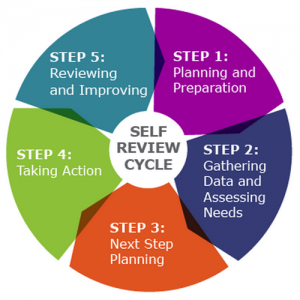The Inclusive Practices Tools and review process are designed to assist school staff to consider what inclusion means, and encourage schools to engage in a dialogue with their community to think critically about how best to support a diverse range of learners.
About the Inclusive Practices Tools, n.d., paragraph 4
The Ministry commissioned the New Zealand Council for Educational Research (NZCER) to develop an inclusion self-review toolkit for schools. The tools are designed to support primary, intermediate, and secondary schools to engage in an ongoing review process for building inclusive practices for all learners. The kit is available on the Wellbeing@School site.
The review process is a valuable exercise that involves surveying the school community, including teachers, students, and whānau. Data from the surveys can be analysed by the online tool to produce Inclusive Practices reports. The reports assist the school to identify possible strengths, as well as next steps to include in an action plan for inclusive practice. The tool allows flexibility so schools can consider a focus on one specific group of students and their whānau (for example, year 9 students on entry to secondary school).
The website takes a school through the review process step-by-step.
The tool kit includes:
- a Student Survey (online or hard copy)
- a Community Survey (online or hard copy)
- a Staff Survey (online or hard copy)
- a School Review Profile (online or hard copy)
- links to additional resources for planning next steps
- an Inclusive Practices action plan template
- a range of online survey reports.
For leaders of PLD working in a range of schools, the schools you are working with may have already started or completed a self-review using the toolkit. If this is this case, the focus of PLD should ideally link to the self-review and its findings.
For leaders in schools, follow the review cycle step by step on the Inclusive Practices Tools website to ensure you complete the process. The "Getting started" section clearly outlines the process and considerations at each of the five steps.
Contact your local Ministry of Education office to see if there is support available for the Inclusive Practices Tools self-review process.



